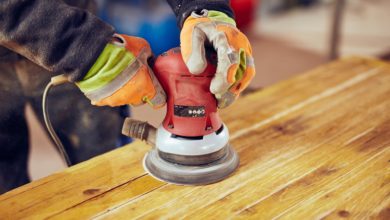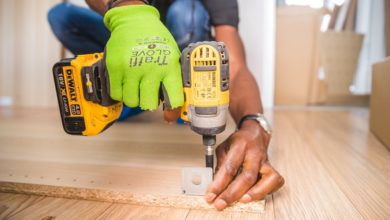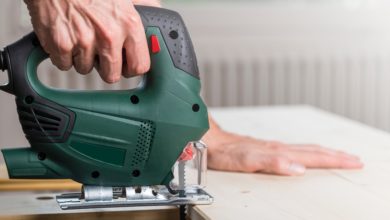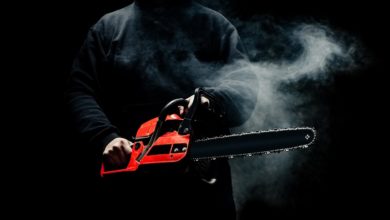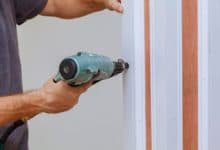Must have tools for DIY enthusiasts
We are often quick to scour Pinterest for countless hours and come with ideas of what we want to do. But when the time comes to materialize our ideas, we find ourselves at the crossroads. If you are an amateur venturing into the expansive field of DIY, you most likely are not aware of the essential supplies that you need to secure.
If you are probably testing your hand in DIY and is searching for the perfect toolkit that you want to start with, this guide has you covered. We have enlisted a set of fundamentals to help you save money.
How to stack your toolbox
 First, let’s converse about how you are going to gather together all these versatile tools. Like mentioned beforehand, racking them up at just once could run you hundreds or even thousands of dollars.
First, let’s converse about how you are going to gather together all these versatile tools. Like mentioned beforehand, racking them up at just once could run you hundreds or even thousands of dollars.
The smartest course is to purchase the crucial tools you need to have onboard just in case and any added ones you need for the task you’re doing; then pick up others along the way with each fresh project.
This will also be of assistance when you buy the best value tools you can buy—a requirement if you don’t care for tools that snap or break after a few uses. To end with, bear in mind to put your tools back in the same place, whether you stock them up in a plain drawer, a definite toolbox, or a full-blown workshop.
A basic DIY Toolbox
Hammer
 A nail is inadequate exclusive of a hammer. Nearly all hammers have a claw opposite the head, so one can make use of the lone rear to entrench nails and the other to meddle them out.
A nail is inadequate exclusive of a hammer. Nearly all hammers have a claw opposite the head, so one can make use of the lone rear to entrench nails and the other to meddle them out.
One can also employ a hammer for any task that demands a good hit, such as flouting up a display wall or knocking/encasing lumber into rest.
Specialists say the most resourceful kind of hammer is a 16-ounce hammer with a downy head and a bowed claw. This bulk can be used equally for flimsy jobs, like hanging things, and more hardwearing ones, like revamping a deck. The curled claw makes drawing out nails easier.
You can also go the ones with wooden or fiberglass grip. Since you will be employing this tool a lot, look for one that feels comfy to hold and well-proportionate when you rock it.
Screwdrivers
 A number of things in our home are tightened together with screws. They cleave together furnishings, lanterns and connect filing cabinet doors, outlet wraps, and even doorknobs. So anytime one needs to fasten any of these things, they will need a screwdriver to take out the screws and assemble them back yet again. Owing to these, it is no surprise that these are the single most tools in one’s toolbox that they will reach for most frequently.
A number of things in our home are tightened together with screws. They cleave together furnishings, lanterns and connect filing cabinet doors, outlet wraps, and even doorknobs. So anytime one needs to fasten any of these things, they will need a screwdriver to take out the screws and assemble them back yet again. Owing to these, it is no surprise that these are the single most tools in one’s toolbox that they will reach for most frequently.
If you are really into saving space on your toolkit, you can opt for multi-bit screwdrivers over the conventional ones. These tools have just one knob with a collection of pieces that one can swop in as required.
Whether you choose to go with one multifaceted screwdriver or quite a few of them, look for ones that are strapping and easy to grip. If you are certain that you are going to be employing it a lot, it is creditable leaping in for a detenting screwdriver. These have unique built-in components that let you fasten and slacken screws much quicker.
Like a hammer, a screwdriver is a requisite for bringing together flat-pack furniture. It’s also imperative for other facile undertakings around the house. For example, swapping debilitated electrical outlets is a fairly straightforward task, but there is no way to do it without a screwdriver.
Adjustable Wrench
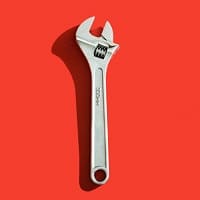 For adjustability and handiness, one cannot simply beat the time-honored adaptable wrench, which facilitates to turn an ample array of nuts and bolts with a single tool. Stuff that is not fastened with nails or screws is typically coupled with nuts and bolts. To stiffen and loosen those bolts, one needs to resort to a wrench. An adjustable wrench performs the chore best because it can rework its sizing to holdfast onto nuts of many diverse dimensions.
For adjustability and handiness, one cannot simply beat the time-honored adaptable wrench, which facilitates to turn an ample array of nuts and bolts with a single tool. Stuff that is not fastened with nails or screws is typically coupled with nuts and bolts. To stiffen and loosen those bolts, one needs to resort to a wrench. An adjustable wrench performs the chore best because it can rework its sizing to holdfast onto nuts of many diverse dimensions.
When buying an adjustable wrench, always go in for two wrenches of varying lengths- a slightly smaller one and a long one. It is advisable to procure one with an extensive jaw aperture and a comfortable grip. It should also be trouble-free to fine-tune and hang about longer once you have got it set to the dimension you want.
This tool can save you money on a multiplicity of tasks. For starters, one can utilize it to do uncomplicated plumbing upkeep at the household, rather than seeking the help of a professional plumber. Additionally, one can use it to revamp something like a bicycle instead of repairing it at a shop. Lastly, a wrench is functional for all sorts of extensive construction jobs, from decks to playfield equipment.
Putty Knife
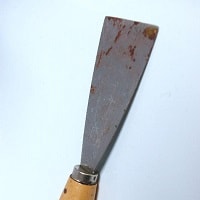 A putty knife is an indispensable tool for any job that entails scraping. Having a superior-good quality knife at the ready makes it painless to do these jobs yourself.
A putty knife is an indispensable tool for any job that entails scraping. Having a superior-good quality knife at the ready makes it painless to do these jobs yourself.
A putty knife, also branded as a scraper, is helpful for a selection of tasks. This includes applying and smoothing down lumber putty or spackle, scuffing off flaking paints or wallpaper, or even for eliminating caulk around a barrel or windowpanes. The slender blade is also constructive for prying open a tin of putty before its application. Subsequently, one can use the knob end to bash the lid close again.
When purchasing utility knives, pick ones that are tapered satisfactorily to fit into crooks, but wide-ranging enough to fill huge cracks promptly. The best knives come with blades of lithe stainless steel, which is convenient to be cleaned and would not take rust. The knob should be comfy and lengthy enough to provide you with adequate leverage.
Utility Knife
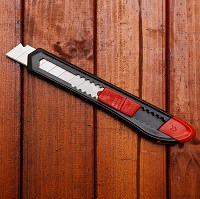 There will arise a range of tasks especially while cutting, which becomes tricky to perform with a normal scissor. On occasions like that, a utility knife comes in handy.
There will arise a range of tasks especially while cutting, which becomes tricky to perform with a normal scissor. On occasions like that, a utility knife comes in handy.
An excellent utility knife has a safe and comfortable lever. Preferably, it should also have built-in storage space for housing additional blades. That way, one is more liable to alter the blade when needed instead of turning along with a dreary blade, which could be a good way to invite injuries.
When buying these knives, go for the ones that open and seals with one hand and locks into varying arrangements. This cuts down on the time when you want to grasp something with one hand and sever it with the other. A belt hook for hauling would be another pleasant feature to have.
Handsaw
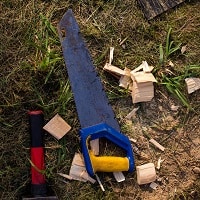 It is plainly a saw-toothed cutting blade connected to a handle knob. It can come in handy for constructing swift cuts in lumber. It enjoys a lead over a power saw in being faster and simpler to use. It is also superlative for structuring something like a treehouse, as it is not simple to cargo a power saw up a stepladder.
It is plainly a saw-toothed cutting blade connected to a handle knob. It can come in handy for constructing swift cuts in lumber. It enjoys a lead over a power saw in being faster and simpler to use. It is also superlative for structuring something like a treehouse, as it is not simple to cargo a power saw up a stepladder.
It must be noted that saws come in three fundamental types.
- The conventional western saw has a two-foot blade that gets thinner from bottom to tip. It makes a cut as one ram frontward through the plank.
- A Japanese pull saw has a collinear blade. It cuts when one lugs it back through the wood.
- Pruning saws slashes on the pull stroke. They have a tapered blade that creases up for storage space.
Another point of contrast arises in the number of teeth per inch. For rip carvings against the grain of the wood, six to eight teeth per inch work unsurpassed. When it comes to crosscuts made against the crumb, eight to twelve teeth per inch is superior. So, an eight-point saw is an excellent concession for making both kinds of an incision.
A closing feature to seek would be a throwaway blade. That way, one ensures that they do not have to change the entire saw if the blade gets dented. Conclusively, a handsaw can help you cut down on your money on all sorts of small-scale construction and refurbishing tasks.
Pliers
 When you have to hold on to something to pull or turn it, but cannot grab it with your fingers or is not adequately sturdy to apply the force you need, a good set of pliers can come in handy.
When you have to hold on to something to pull or turn it, but cannot grab it with your fingers or is not adequately sturdy to apply the force you need, a good set of pliers can come in handy.
They come with teeth (mostly metal) on one end to clutch onto an item, and protracted handles on the other end to provide leverage as you pull, twist, or bend it. It can be used for slackening nuts; drawing out nails, unbending power plugs, eliminating plumbing fittings, and pinching wires collectively to splice them.
There are different sorts of pliers. They include
- Locking pliers have adaptable jaws that one can rescale to fix a nut or other fixture. For locking the jaws into position on the object, one can then press a lever with your hands left free and apply pressure to the handle. This makes them perfect for tasks that involve an abundance of power, such as eliminating a tarnished bolt or a stripped screw.
- Needle nose pliers have lengthy, slender tips that can get into taut spaces. They are central for carrying out electrical labor, but they are also just right for any time your fingers are too big or too frail to get a good hold. It can also be used for mending objects out of the drain or grasping a nail in place amidst hammering so you don’t hurt your fingers.
By securing a pier to your toolkit, you are prepared to handle a multiplicity of jobs. You can work with sturdy pipes to flimsy wiring with corresponding ease. In the long run, they also save you many calls to the technicians.
Tape Measure
 When it comes to a majority of DIY jobs, exact measurements are not to be taken lightly. Whether it be extracting the dimension of a pipe or placing a picture on the wall, a tape measure one cannot simply do away with a tape measure.
When it comes to a majority of DIY jobs, exact measurements are not to be taken lightly. Whether it be extracting the dimension of a pipe or placing a picture on the wall, a tape measure one cannot simply do away with a tape measure.
For increasing the competence, be sure to get a locking and retracting tape measure. By this, one can nosh out the tape inch by inch without having to grip it down. It will continue fed out while we jot down dimensions. When over and done with, one can easily retract the tape at the tap of a button.
Durability is a crucial proponent while deciding on a taping measure. The holder and blade should both be strapping, and the padlocking lever should be undemanding to use with one hand. Furthermore, the tang should be sized enough to clench wherever you put in, but not so big that it gets wedged on close-by things. A vibrant case is a wonderful bonus as it makes the tool easier to locate in your toolbox.
Flashlight
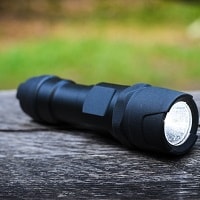 One may not have the most suitable lighting conditions or environment while working. Oftentimes, one has to work amidst faintly lit underground rooms or take into murky crevasses. Also, every so often one may require finding their way around when the electricity is out.
One may not have the most suitable lighting conditions or environment while working. Oftentimes, one has to work amidst faintly lit underground rooms or take into murky crevasses. Also, every so often one may require finding their way around when the electricity is out.
In situations like these, a flashlight can be put to use to see what you getting yourself into.
The only requirement of a flashlight is to provide enough light to facilitate sight. And most likely, even the most inexpensive models at your neighboring drugstore will work in a pinch.
However, if you are ready to expend a few extra dollars on this, you might as well bring home more durability. An electric rechargeable headlamp that mounts on the forehead could be a useful feature.
Hardware
 It is always good to stock up on nails so that you do not have to rush to the store each time something in the house needs a fastener. Nails come in an extensive variety of sizing, from minuscule finishing nails to pierces that are several inches in length.
It is always good to stock up on nails so that you do not have to rush to the store each time something in the house needs a fastener. Nails come in an extensive variety of sizing, from minuscule finishing nails to pierces that are several inches in length.
The nail sizes are frequently scheduled in “pennies,” abridged as “d”. Nevertheless, a penny is not a definite unit of length. Instead, the term refers to what nails of diverse sizes amount to. Screws differ not just in magnitude, but in their categories as well. While some can be put to use for binding wood, others for fastening bits and pieces to the drywall. They can also be composed of diverse materials.
While assembling a toolkit from scrape, just acquire a packaged variety of nails and screws. These regularly come with other usable fragments of hardware such as photograph hooks or divider anchors. However, if you are looking forward to building your own collections, here are the different types you can slot into the toolkit.
- Finishing nails: These are handy for small repairs. They can be used for tasks such as hanging pictures.
- Vinyl Sinkers. : They come with a vinyl coating that renders them easier to knock in and difficult to pull out. They can be effectively utilized for construction purposes.
- Galvanized nails: They have a rust-resistant finish which makes them appropriate for outdoor jobs.
- Drywall screws: Coated with black phosphate, they are designed to connect drywall to studs, but one can use them for practically any indoor work.
- Outdoor screws: Either coated or composed of stainless steel, they can be exploited for constructing decks and other outdoor projects
Tape
 While it is not the smartest idea to rely on duct tape for all the slight mishaps, there is no denying that they are the best for a quick fix. Into the bargain to this wide-ranging tape, there are diverse types of singular tapes that are central for definite DIY tasks. Here are the four major types.
While it is not the smartest idea to rely on duct tape for all the slight mishaps, there is no denying that they are the best for a quick fix. Into the bargain to this wide-ranging tape, there are diverse types of singular tapes that are central for definite DIY tasks. Here are the four major types.
- Duct tape: This clammy tape has a bulky, woven backing and is uncomplicated to tear off to the length you desire. It can be used for anything from patching a tattered tarp to re-attaching the hold to a busted bucket. The one downside to this, however, is that it does not stand up well to high temperatures. The majority of duct tape comes in silver, but bright colors that are easy to spot are also available on the marketplace.
- Painter’s tape: This evenly sticky painter’s tape is simple to take away from a surface without harming it. Its chief rationale is to envelop moldings or the ends of ceilings before painting a wall spillover. You can also relate it to pipes to keep your pliers’ teeth from scratching them.
- Electrical tape: Made of vinyl, this tape is intended to insulate electrical wires. You can utilize this tape to fix dented wires or to cover up pipes in winter to avoid freezing.
- Plumber’s tape: A thin, light tape constructed of Teflon which when applied, aids information of a tighter seal.
Toolbox
Once you have arranged your wide-ranging assortment of tools, the next requirement would be something to store them. A strapping, well-organized toolbox will assist you in finding your tools when you want them. It can also guard them against damage amid uses.
An ideal toolbox must be big enough to hold all the tools you use recurrently while being easy to carry. To prevent your tools from spilling out, make sure the lid and latch should be safe in order. Compartmentalized toolkits make it easier for you to sort out the tools.
A toolbox does not essentially save you money, but it does save your time and energy. When you have a refurbishment to do, it is an annoyance to go fumbling through a muddled bin looking for the correct tool. A good toolbox keeps all your tools at hand so that you can pick it up whenever you please.
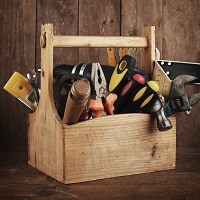
Few Advanced Tools
With the tools listed above hand, you ought to have a hold over the most basic repairs in the household. However, if you add a few additional tools to these essential supplies, you can take on more complex DIY ventures and save even more money.
Drill
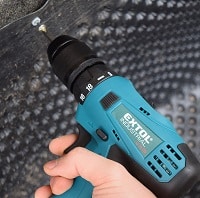 An electric drill is probably the most functional power tool one can possess. It is a drill and a power driver in one. You can use the drill utility to create holes of all sizes. If we substitute the drill with a screwdriver portion, you can coerce screws much quicker than you could with any hand-held screwdriver.
An electric drill is probably the most functional power tool one can possess. It is a drill and a power driver in one. You can use the drill utility to create holes of all sizes. If we substitute the drill with a screwdriver portion, you can coerce screws much quicker than you could with any hand-held screwdriver.
When choosing a drill, opt for ones that have a sturdy build, a comfortable grip, and considerable warranty.
Circular Saw
If a need arises to cut a large amount of wood, you can always fall back onto the circular saws. Its round and fast blades power through the timber quickly.
It could be really dodgy and even the slightest mishaps bring forth great causalities. Therefore, one has to really caution while using them.
Staple gun
 A staple gun, also known by the name powered stapler or trigger tacker, is a hand-held machine that is typically used to drive hefty metal staples into objects such as timber, plastic, or other building materials. It finds application in a wide variety of fields such as roofing, housing, hose casing, and wiring among many others.
A staple gun, also known by the name powered stapler or trigger tacker, is a hand-held machine that is typically used to drive hefty metal staples into objects such as timber, plastic, or other building materials. It finds application in a wide variety of fields such as roofing, housing, hose casing, and wiring among many others.
There are three kinds of staple guns. The classification is based on the power sources used to operate them. The different types include manual, electric as derived a cord or battery and lastly, pneumatic which works on the application of compressed air
A power stapler works better than their hand-powered contemporary models. However, their main advantage is that they can be used for long hours with very little or no fatigue at all.
Jigsaw
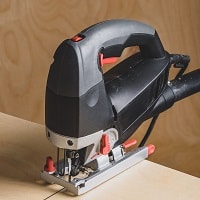 A jigsaw (power tool) is constructed up of an electric motor in addition to a responding saw blade. They are also referred to as saber saws and bayonet saws. Jigsaws with singular plates that have a leveling function can incise angles characteristically up to 45 degrees as opposed to the normal vertical stroke to make miter joints.
A jigsaw (power tool) is constructed up of an electric motor in addition to a responding saw blade. They are also referred to as saber saws and bayonet saws. Jigsaws with singular plates that have a leveling function can incise angles characteristically up to 45 degrees as opposed to the normal vertical stroke to make miter joints.
It works by fastening a blade accessory to the appliance. There is an assortment of blades in the market. The majority of jigsaws entail a blade to be screwed into the tool. T-shank blades and U-shank blades are the prominent blades available in the accessory market.
Between which T-shank blades are the industry-standard specialized interface that offers longevity of life and a tighter body from the blade to the tool. But with the latest additions markers are putting tool-less blade adjust system which facilitates the snapping of the blade into the tool.
Tooth design is another proponent that is significant for the execution and performance of a blade. The tooth spacing, tooth contour, and cutting angle are important in supplying velocity, spotlessness of cuts, and best possible performance.
- Side set and the ground tooth is intended for unsoiled and swift cuts in wood and plastics
- Wavy set along with milled teeth will hack most metals as well as aluminum and plastics.
- Side set and milled tooth work with hasty and rougher cuts in wood and plastics.
- Ground and taper ground tooth is for very accurate, superior and clean cuts in lumber.
The only bummer to the jigsaws is controlled. The blades are diminutive and frail, with the lower end completely unsupported. Dandy cut control calls for the attendance of blade rollers, which would maintain the blade allied just over the soleplate. Additionally, heavy-cast sole plate saws are fairly better than pressed steel for sawing line up control. To direct a jigsaw on an arched cut, it must be steered and not strained to shift sideways. The use of razor-sharp blades is essential as well to get good cuts.
Orbital sander
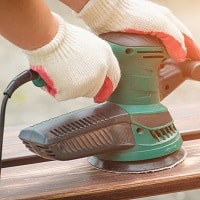 These are hand-held power tools that are used for sanding. The sanding blade conveys a random-orbit stroke. To put it plainly, the angle of rotation of the head and disk is changeable. They work by combining the pace and aggressiveness of a belt sander. This added with the capability to fabricate a better and improved finish than that available from a typical, slows pace orbital finishing sander, make them quite the right fit.
These are hand-held power tools that are used for sanding. The sanding blade conveys a random-orbit stroke. To put it plainly, the angle of rotation of the head and disk is changeable. They work by combining the pace and aggressiveness of a belt sander. This added with the capability to fabricate a better and improved finish than that available from a typical, slows pace orbital finishing sander, make them quite the right fit.
They typically come in three varying types-electric powered, air-powered, and orbital floor sanders. While the first two are handheld models, the orbital sanders are large rolling machines.
The random orbit sanding pattern is fashioned by concurrently rotating the sanding disk and stirring it in diminutive ellipses. This guarantees that no sole part of the rasping material travels the same path twice during the same rotation. Owing to this, the tool does not leave whirl marks and is not susceptible to the bearing of the wood grain.
They come with sandpaper disks, and many models include integrated dust collectors. Disks are fastened using pressure-sensitive bonding agents, hook or even a loop system. On models that come with a dust collection feature, a vacuum sucks the released dust through outlets in the paper and pad.
Impact driver
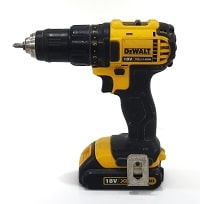 A manual impact driver is an instrument that distributes a strapping, swift rotational force and frontward thrust when hit on the back with a hammer. It is habitually used by mechanics to loosen bigger screws and nuts that are corrosively stationary or over-torqued. The course can also be upturned for circumstances where screws have to be stiffened with torque greater than what the typical screwdriver can provide.
A manual impact driver is an instrument that distributes a strapping, swift rotational force and frontward thrust when hit on the back with a hammer. It is habitually used by mechanics to loosen bigger screws and nuts that are corrosively stationary or over-torqued. The course can also be upturned for circumstances where screws have to be stiffened with torque greater than what the typical screwdriver can provide.
Electric impact drivers supply rotational hammering action and are extensively utilized to drive screws. They do not, however, provide the forward thrust that a manual impact driver does.
The impact drivers weigh less and are smaller than drill drivers. Although they are not as adaptable, they will carry out many of the same utilities. Given that their torque output is higher than a typical drill driver, they get through work more promptly.
Nail gun
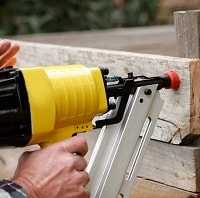 A nail gun also called a nailer, is commonly put to use for driving nails into wood or other material. They work on the principle of compressed air electromagnetism using highly flammable gases such as butane or propane. Time and again, nail guns have been an efficient alternative for hammers amongst many builders.
A nail gun also called a nailer, is commonly put to use for driving nails into wood or other material. They work on the principle of compressed air electromagnetism using highly flammable gases such as butane or propane. Time and again, nail guns have been an efficient alternative for hammers amongst many builders.
They work with fasteners mounted in extended clips, paper or plastic carriers. Industrial nailers, premeditated for use against materials like steel or concrete, posses a self-loading motion for the explosive caps. This is very unlike the most need nails that have to be loaded by hand. Nail guns vary in the length and thickness of nails they can drive.
- The smallest size of fasteners or pin nailers is usually 23 gauge and has no head. They are used for connecting everything from beadings to moldings.
- The next size of nails are brad nails and measure up to18 gauge. These fastenings are utilized to fix moldings or in trimming carpentry.
- The finish nails come between 15 to 16 gauges. They are put to use in general setting up of much softwood and MDF trim work where the gaps have to be crammed and painted.
All kinds of nail guns can be risky, so security precautions comparable to those for a firearm are typically optional for their application. For safety, nail guns are deliberated to be paired with the muzzle contacting the aim. if not explicitly customized for the purpose, they are not efficient as a projectile weapon.
Stud Finder
While handing heavy objects, we have to ensure that they stay put. To mount them steadily and firmly, you need to fasten them into the stilted wall studs. That can become a little problematic as they remain hidden behind the drywall making them hard to locate.
This can be fixed by using a stud finder that locates the metal screws that secure the stud to the wall. The magnet within attracts the metal and hence, it becomes a breeze. The advanced stud finders can also trace copper pipes and electrical wires, but for most homeowners, this may not be feasible.
Safety Gears
 Advanced DIY jobs pose increasingly greater risks. Threats like fumes, dust, and flying splinters cause great damage. In order to safeguard yourself from these potential risks, certain safety measures have to be undertaken.
Advanced DIY jobs pose increasingly greater risks. Threats like fumes, dust, and flying splinters cause great damage. In order to safeguard yourself from these potential risks, certain safety measures have to be undertaken.
- Gloves protect your hand from damage. Well-made gloves prevent splinters, scuffing of your skin from rough bricks from heat, cold, and electric shock. They also lessen the blow that comes with a hammer.
- Goggles protect your eyes from sawdust, splashing plunges of stain or other chemicals, and flying debris.
- Marks protect you from inhaling dust while sawing and sanding. The respirators prevent harmful vapors while working with paints by blocking out fumes.
One last word
One of the means to save money on DIY is to have a stockpiled toolbox at the stand by. This is not to mean you go out and acquire every tool at the hardware store just on the possibility that you might want it. It makes more logic to use up your tool budget on a few truly fine tools that one can use time and again.
Fortunately, one does not need an abundance of tools to be geared up for home emergencies. About a dozen tools should be adequate to see you through the most indispensable repairs.
On a final note, bear in mind that it is not just enough to have a good toolkit. You need to acquaint yourself with the skills required to use them effectively. So as you construct and assemble your toolkit, build and step up your DIY skills as well
